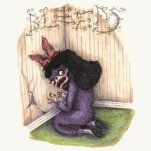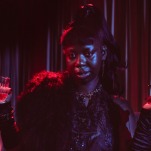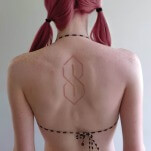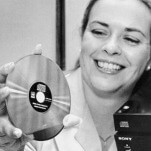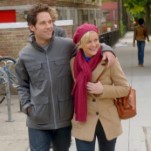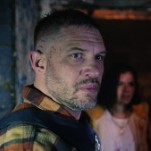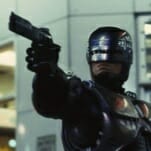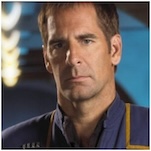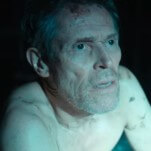Gaslighting Is the Key to a Successful Shining Girls Adaptation
Photo: Courtesy of Apple TV+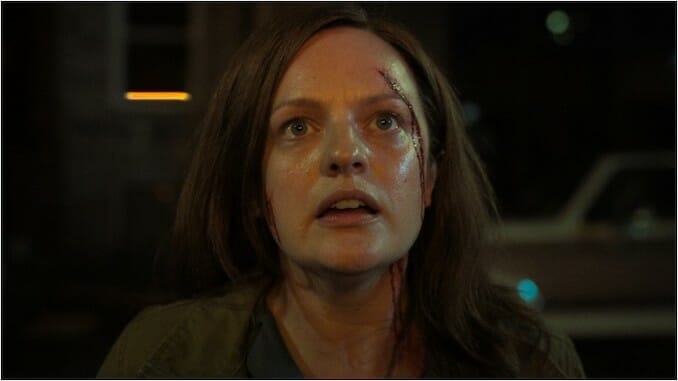
Lauren Beukes’ 2013 speculative murder mystery The Shining Girls has some pretty solid hooks: A serial killer, a time-traveling house, a list of “shining girls” to murder across decades, and the victim who survives. For many readers, that was enough to express how impossible it would be to catch such a killer if he could just open a door into another time. But for the 2022 Apple TV+ adaptation, the source material was missing a final piece to really depict the hopelessness of trying to chase someone through time and space. Then series creator Silka Luisa found the final lead that ties it all together: create more doors into other realities, without viewers—or even the series’ protagonist—knowing which worlds and times are real.
Just like in the book, wannabe reporter Kirby Mazrachi (Elisabeth Moss) is an archivist at the Chicago Tribune trying to earn her right to a byline. It’s 1993, four years since the brutal attack from a stranger who inexplicably seemed to know her, who gutted her like a pig but didn’t manage to finish the job. When a recent homicide matches Kirby’s distinctive scars—including the killer’s macabre M.O. of leaving an anachronistic object inside his disemboweled victims—Kirby must offer up her past trauma as credibility to confirm the existence of serial killer Harper Curtis (Jamie Bell).
The only problem is, Kirby’s present isn’t even hers: Every day she wakes up and scans a list of facts she’s written for herself (her name, address, even what kind of pet she has), because she may start the day living with a cat named Grendel and her hot mess of a mother, Rachel (Amy Brenneman), but she may end with Grendel being a dog and Rachel a born-again Christian. During the workday, Kirby might leave the archives to run some information upstairs to the newsroom, where she longs to be, and when she returns her desk has moved…and has always been there, so she’s the one who’s imagining that it was ever in another spot.
In the novel, it’s only Harper who can move through time thanks to his mysterious home, while Kirby is stuck on a linear track—like a twisted The Time Traveler’s Wife dynamic. But the TV series has granted its heroine her own version of time travel, even if it’s more of a sideways shift through parallel universes. This brilliant change from the book immediately destabilizes both Kirby and the viewer; if you’re not paying close attention, you’ll also miss the moments where her entire world turns on a change, big or small, and yet again Kirby must reorient her worldview without anyone noticing that she’s off-balance. But once Kirby is in pursuit of the truth, her rapidly-shifting present makes her an unreliable witness and an untrustworthy reporter.
Because the show follows multiple perspectives, viewers catch on before Kirby does that Harper must have some impact on how her present changes. As we see him stalk various “shining girls”—those burning with potential that he wants to snuff out—his movements match her stumbles into alternate universes. Even as Kirby tries to help Tribune reporter Dan Velazquez (Wagner Moura) investigate Harper’s murder of Julia Madrigal, things start changing in such substantial ways—like discovering that she’s married to her coworker Marcus (Chris Chalk) despite hardly knowing him—that her regular coping mechanisms are becoming woefully inadequate for managing.
She was prepared for one item on her list to change each day, not for entire histories to sprout up that she doesn’t remember. And despite her stubbornness in reminding herself that she knows who she is, the growing evidence otherwise—photographs, new haircuts, contradictions from Rachel and Marcus and others—make that doubt fester. Pulling evidence, like the matchbook Harper left in her body—from the Bee Happy Bar, which doesn’t even exist yet in 1993—only further makes her question her sanity.
It would seem that Kirby is being gaslit. Because by the time she has to trust Dan with revealing her trauma, it’s no longer just about whether Kirby feels comfortable accessing the past; now everything that happened to her is called into question.
Book Kirby gave off a “plucky girl reporter” vibe, the novice who wouldn’t get her chance to break the big story until she had the intel no one else could, and the mentor figure in Dan to give her that platform. He’s got the decades of reporting experience; she’s got the personal connection and a name that sounds perfectly dreamed up for a book character.
The adaptation cleverly subverts the very put-on nature of Kirby’s moniker by turning it into an alias. Kirby isn’t actually Kirby—or at least, she wasn’t always the woman we meet in the pilot. As she begins sharing details of her assault with Dan, she reveals that she was born Sharon Leeds; even after she survived, Rachel still calls her by it. She changed her name, first and last, at some point during her recovery, presumably so her would-be killer would have no chance of ever finding her.
Yet in doing so, the adaptation also highlights how this is a damning misstep for Kirby’s credibility. After all, how can you believe a woman who isn’t who she says she is?
It helps to have Elisabeth Moss in the role, which is an almost too natural a progression from Hulu’s The Handmaid’s Tale and the 2020 gender-swapped remake of The Invisible Man. Moss has played gaslit women out the wazoo, from June being beaten and brainwashed into submission based on her fertility by Gilead’s Aunts, Wives, and even fellow Handmaids; but especially as Cecilia, who escapes an abusive partner, only for him to don an invisible suit and stalk her into her new life. Despite feeling the invisible man’s eyes on her in every room, Cee’s trauma responses paint her as hysterical, unhinged, and even dangerous to her loved ones.
-

-

-

-

-

-

-

-

-

-

-

-

-

-

-

-

-

-

-

-

-

-

-

-

-

-

-

-

-

-

-

-

-

-

-

-

-

-

-

-


